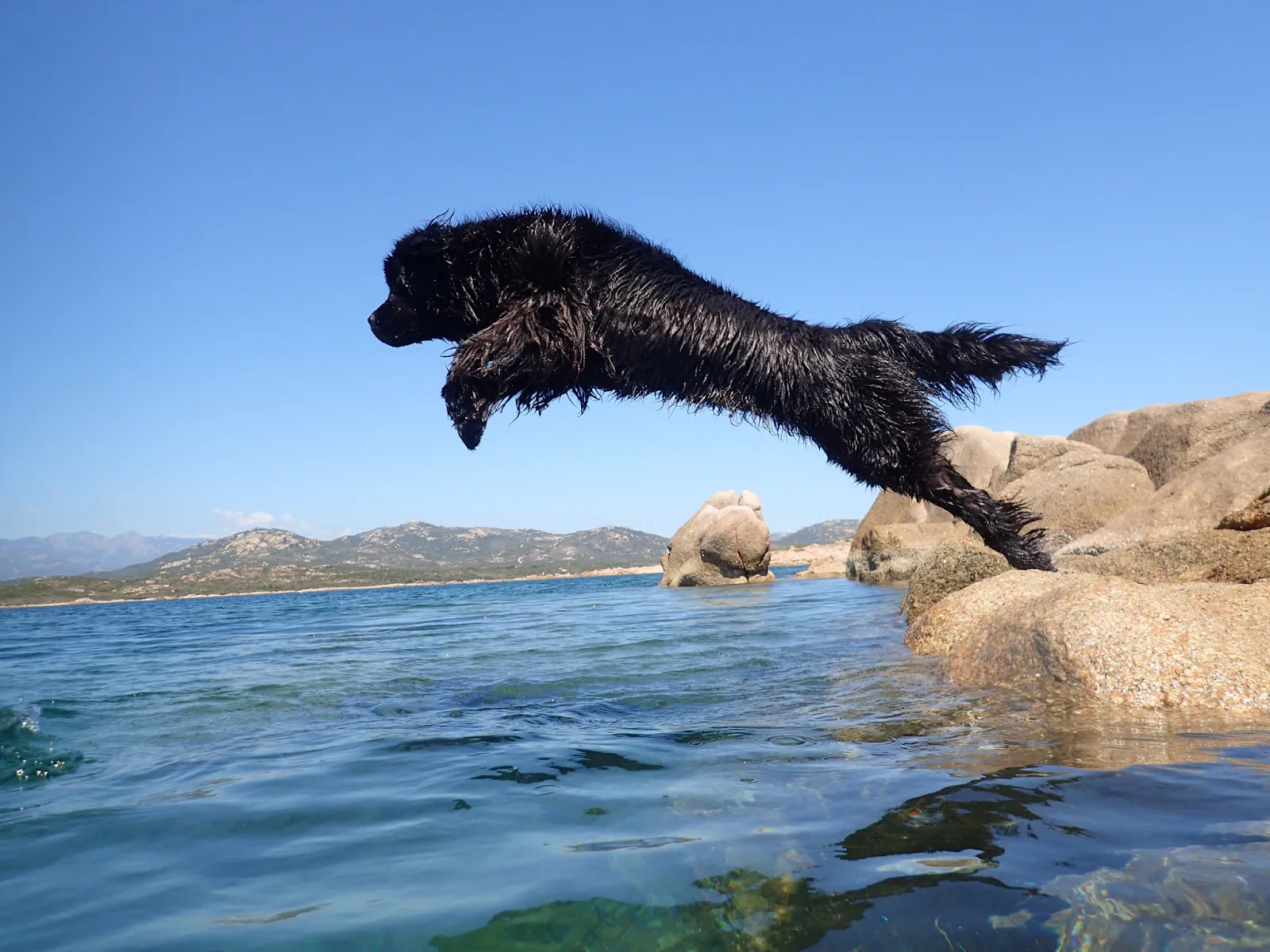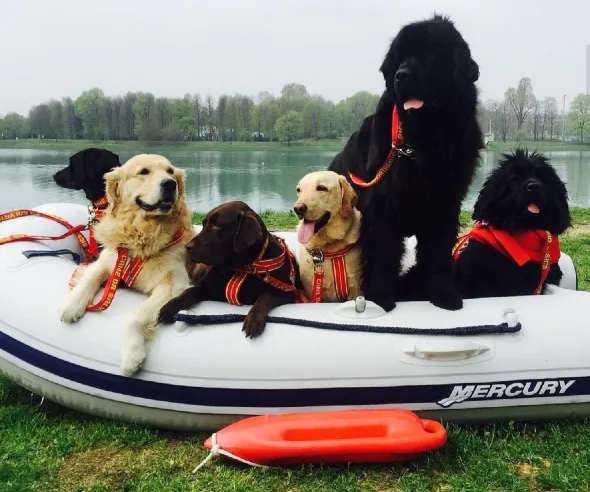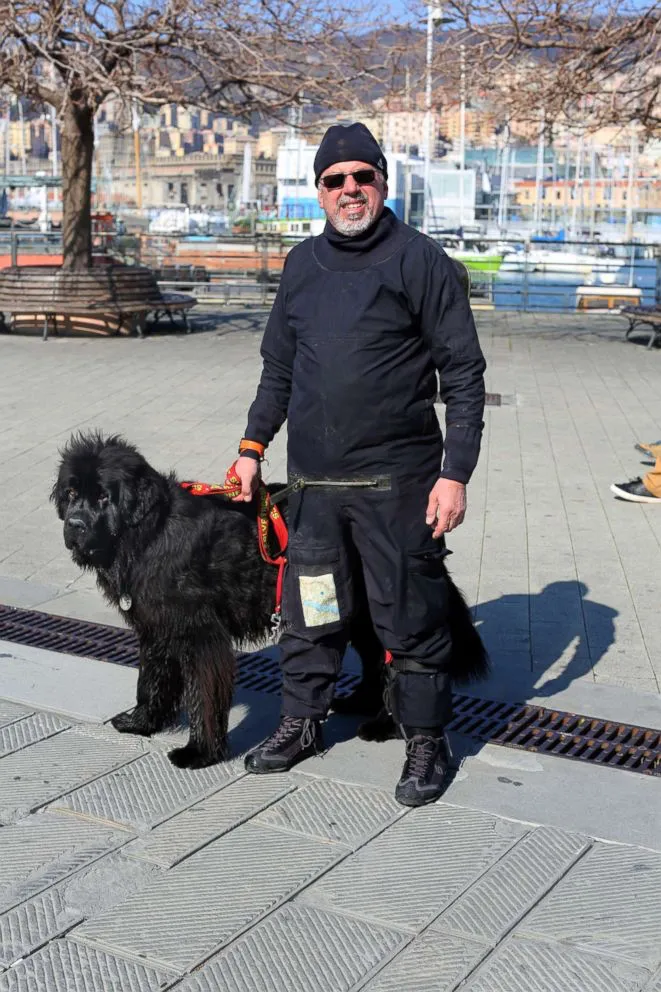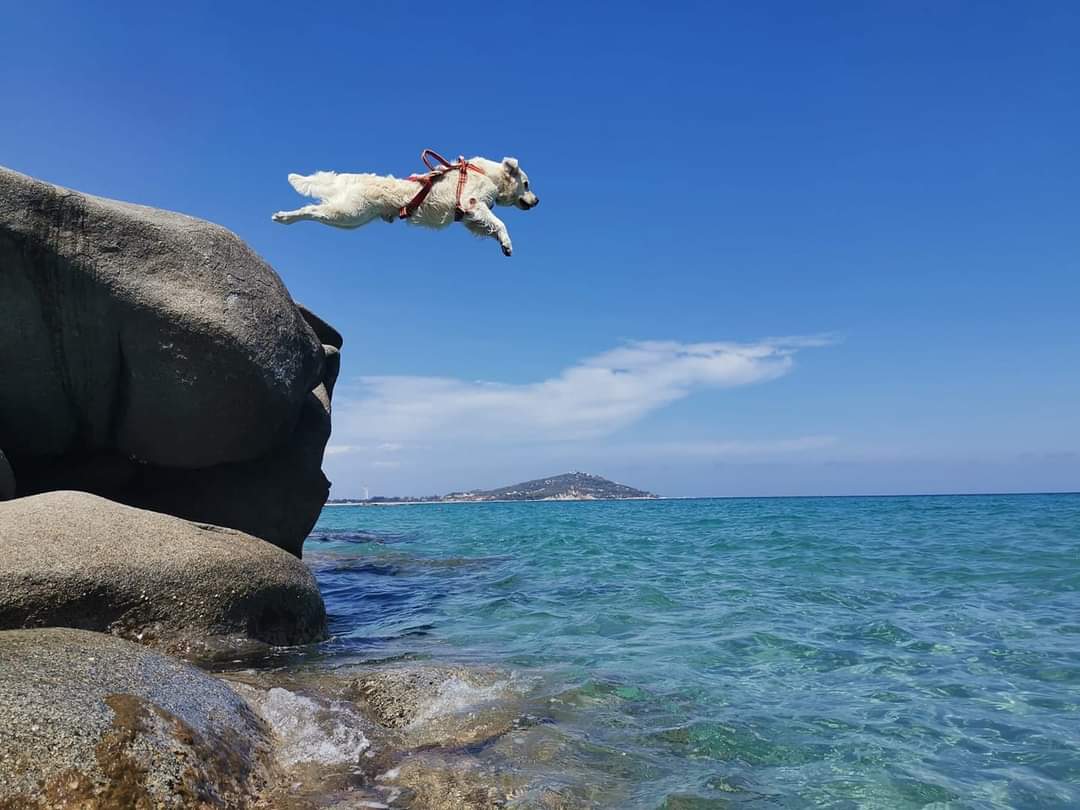Move Over Baywatch: Italy’s Special Forces Lifeguard Dogs are Beach Fit
La Scuola Italiana Cani Salvataggio is the only rescue dog school in the world to train dogs and handlers in the most spectacular water rescue technique of all: helicopter dives.
Newfoundland dogs and canine lifeguards
When Italian Naval Commander Ferruccio Pilenga's daughter was small, she ran into difficulty while swimming in a lake. She thrashed around, almost drowning until Ferruccio's Newfoundland dog, Massina, swam out and helped her back to shore.
It was then that Ferruccio, a retired Italian Navy commander, had an idea: why not train Newfoundlands to become canine lifeguards?

Doggie lifeguards
He started by training ‘Mas’, as he calls her. “She pulled a water-filled dinghy with three people on board for half an hour," Ferruccio told journalists. In 1989, Ferruccio then set up the Italian Rescue Dog School La Scuola Italiana Cani Salvataggio (SICS) near Milan. Now, more than 30 years after Mas rescued Ferruccio's young daughter, dogs from the school are saving lives on beaches and lakes across Italy, jumping from coast guard boats and helicopters and dragging dinghies to safety.
Ferruccio’s international course has trained dogs working in the US, Germany, Switzerland, the Canaries, and the Azores, and there are plans to open a chain of schools in more countries. From Lake Como to Puget Sound, what is it that makes the canines of the Italian School of Rescue Dogs so special?
The majority of the school’s lifeguard dogs tare Newfoundlands, or 'Newfies,' the legendary working dogs bred by the fishermen of Newfoundland, Canada. These shaggy giants can weigh up to 150 pounds and stand 28 inches at the shoulder, making them one of the largest of all dog breeds. They are loving, trusting, and great with kids: true gentle giants.
They are also almost uniquely well-suited for water, which they love. Their coat has an oily, water resistant quality and their paws are webbed. Unlike other dogs, they don't doggie paddle. They have their own form of canine breast stroke making them exceptionally strong swimmers.

SICS gives 'rescue dogs' a whole new meaning
Newfoundland fishermen used them to drag their nets and soon discovered that the dogs had a strong instinct to rescue people who had fallen overboard.
Stories of their life saving prowess are the stuff of legend. Perhaps the most famous is the rescue of the crew and passengers of The Despatch (sometimes spelled Dispatch), a brig full of Irish immigrants bound from Londonderry to Quebec which was shipwrecked off the coast of Isle aux Mort, Newfoundland in 1828. A 17-year-old Canadian girl Ann Harvey, her 12-year-old brother, father George, and a Newfie called Hairy Man, are credited with using their fishing boat to help rescue more than 160 men, women and children from the shipwrecked vessel.
"The whole of these unfortunate people, we learn, were in comfortable circumstances, one of whom, a Scotchman, had property to the amount of £500 on board, and he is now left with a family of 13 children, entirely destitute; indeed all that any of them have saved are a few clothes which were washed on shore," the Acadian Recorder reported.
To honour their heroic efforts, the Governor of Newfoundland, Sir Thomas Cochrane, gave George Harvey £100 sterling and a gold medal.
A Newfie even reportedly rescued Napoleon Bonaparte when, during his escape from the Isle of Elba in 1815, he fell overboard in rough seas, according to Tiffin Shewmake’s Canine Courage. So when Ferruccio saw Mas save his daughter from drowning, he was witnessing a Newfie doing what the breed had done countless times before: proving itself to be a natural water rescue dog.
"The brand new social experience where you activate your gaming skills as you train like a spy."
- TimeOut
Take on thrilling, high-energy espionage challenges across different game zones.

Dog tired: a rigorous training process
Despite their natural propensity for water rescue, the training regime at Ferruccio's Italian Rescue Dog School is intensive - between 12 to 18 months.
Over the course of the program, the owner and canine train together to form a ‘six-legged team’ that will, if the course is successfully completed, be licensed to patrol beaches. Even after passing the training, the teams need to complete an annual exam to keep their licenses.
Labradors and Golden Retrievers are like ‘petrol cars’, while Newfoundlands are more like ‘diesels’, Ferruccio said, referring to their efficient strength and energy that allows them to carry on for long periods of time.
The dogs are fitted with buoyant harnesses with handles - doggie life jackets - that people can hold on to. The harnesses are particularly useful when carrying out rescues in rough water and allow the team to retrieve up to six people at a time. They also learn what Ferruccio called ‘the dolphin system’ in which the dog drags the handler to a person in the water.
"The big advantage is that in this way I save a lot of energy, I am not tired when I reach the person,” he told ABC News.
Dog and hander do regular 4 km (2.5 mile) swims together, an easy exercise for a dog that has the capacity to drag a boat with 30 people. They are also trained in more spectacular rescue techniques such as jumping from speeding coast guard boats to carry out super-fast rescues.

Hero dogs: helicopter rescues
La Scuola Italiana Cani Salvataggio is the only rescue dog school in the world to train dogs and handlers in the most spectacular rescue technique of all: helicopter dives. It is a technique Ferruccio pioneered with the help of the Italian Air Force and it is only open to teams that have successfully carried out scores of boat jumps.
According to the school's website, Air Force and Coast Guard helicopters hover over the sea when carrying out a rescue. The handler jumps first and the dog follows. The dog can be equipped with a floating stretcher to allow the team to bring casualties to shore from relatively long distances.
One of the biggest challenges is the loud noise of the chopper. Dogs are trained to get used to the sound and communicate with their handler using hand gestures during rescues. SICS also works regularly with all of Italy's national helicopter squads, including the police, the Carabinieri, and the fire brigade.
Meet Reef: the trainer

While Newfies can live to the age of 15, average life expectancy is about 10 years and Massina, the original Italian Rescue Dog, died some time ago. Now Ferruccio's lifesaving four-legged companion is another female Newfie called Reef.
Reef acts as head canine trainer at the school, demonstrating strategies and encouraging the other dogs. Reef and her owner are inseparable. "The dog follows me everywhere,” Ferruccio said. “She comes with [me] on vacation, to the restaurant, and stays in the hotel with me.”
Reef has also become a star on the big screen. She appeared in the 2019 large-format IMAX movie Superpower Dogs, which tells the stories of six exceptional life-saving canines, including dogs trained to save people caught in earthquakes and avalanches.
More than 30 years since their first rescue, the techniques pioneered by Ferruccio and Mas are being used by other training schools in Italy and across the world.
Even so, SICS’ international course, which runs from an artificial lake near Milan, continues to attract teams from across the world and remains a gold standard in water-to-shore canine rescue.

SPYSCAPE+

Join now to get True Spies episodes early and ad-free every week, plus subscriber-only Debriefs and Q&As to bring you closer to your favorite spies and stories from the show. You’ll also get our exclusive series The Razumov Files and The Great James Bond Car Robbery!


Gadgets & Gifts
Explore a world of secrets together. Navigate through interactive exhibits and missions to discover your spy roles.
Your Spy Skills
We all have valuable spy skills - your mission is to discover yours. See if you have what it takes to be a secret agent, with our authentic spy skills evaluation* developed by a former Head of Training at British Intelligence. It's FREE so share & compare with friends now!
* Find more information about the scientific methods behind the evaluation here.


Stay Connected
Follow us for the latest
TIKTOK
INSTAGRAM
X
FACEBOOK
YOUTUBE